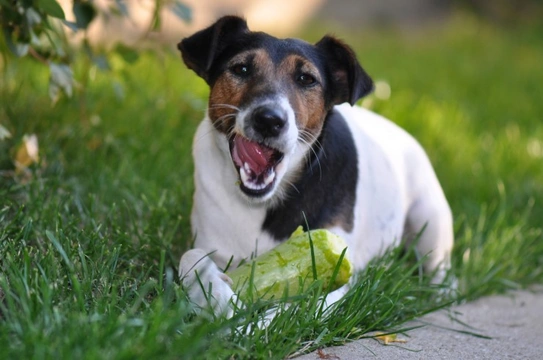
Why do dogs sometimes pull faces after eating?
Dogs can fairly be described as quite comical animals as a whole, and while most dogs certainly do have a genuine sense of humour, they are just as likely to inadvertently provide amusement with their antics as they are to genuinely try to make you laugh!
Additionally, because dogs and humans are of course very different species with different physical anatomies, evolutionary advantages and core traits, it can be hard to translate many of the dog’s natural behaviours into human terms that we as their owners can understand.
Every dog has one or two odd or interesting behaviours that their owners will be familiar with, even if they’re not quite sure why they are happening – but most of the sometimes odd or unusual behaviours that dogs display have a good reason behind them, to your dog if not to yourself!
Something that many dog owners notice in their dog’s behaviour if you watch your dog eat or happen to be around shortly after they have finished a meal is that some dogs will often pull some quite comical faces after eating, opening and closing their mouths, pulling their gums back and generally making strange movements, particularly if your dog is very food-obsessed and tends to eat quickly, like many Labrador retrievers.
If you have ever wondered why your dog pulls strange faces after eating, in this article, we will examine some of the potential reasons why this is. Read on to learn more.
Eating too fast
Dogs that gulp their food without really chewing it properly or taking the time to let their meal go down are the most likely to pull funny faces after eating, as their bodies are still trying to catch up with the food they are digesting. Speedy eaters also run a higher risk of suffering from indigestion, because the digestion process starts with the saliva in the mouth, helping to masticate the food and break it up into smaller, softer pieces for digestion in the stomach.
You can slow down your dog’s eating habits by placing obstacles in their food bowl that they have to eat around, or by feeding them staggered smaller portions of food rather than one large meal.
Food trapped in their teeth
Just as can happen with people, dogs can and sometimes do get food stuck in between their teeth, particularly harder foods like kibble that need to be crunched. However, unlike people, dogs can’t just pick up a cocktail stick or a reel of dental floss to remove the obstruction, which often leads to a lot of licking and mouthing to try to dislodge the irritating particle from its position.
Food particles stuck to the gums
As well as food that can get trapped between your dog’s teeth, wet food and foods that are particularly sticky or gooey can also get stuck to your dog’s gums, which can be hard to dislodge with the tongue. This is a rather odd sensation that will naturally make your dog pull some funny faces and use their tongue and potentially, paws too to dislodge the food in question.
Inhaled food
If your dog accidentally inhales a small piece of their food while eating, they are apt to cough it back up in short order, and continue to eat. However, if they eat with little attention to what they are doing or eat overly fast, they may inhale a piece of food into their lungs, which will feel unpleasant and irritating, and lead to your dog pulling faces while trying to rectify the issue.
Choking hazards
Choking can occur if your dog aspirates food into their lungs, but food particles can also get trapped in their throats, which triggers the dog’s gag reflex. In rare and serious cases, food may actually occlude the airway and lead to choking – and it is important to remember that choking (in either dogs or people) doesn’t usually look the same as it is portrayed on TV!
While your dog might be quite obviously distressed and making hacking and coughing sounds as well as bothering at their faces, choking can also sometimes be very quiet and subtle, particularly if the airway is occluded and your dog cannot get enough air.
This is something that requires immediate intervention on the part of the owner in order to help the dog to clear the obstruction and be able to take a breath, and you can find out more about how to help a choking dog in this article.
Scenting and taste
Dogs do of course have a highly acute sense of smell, and as well as their super-sensitive noses, dogs also have an additional scenting organ located in the roofs of their mouths, called Jacobson’s Organ. Dogs will sometimes open their mouths or draw their lips back to boost the acuity of this scenting organ, which helps to enhance taste, particularly if they enjoyed their meal and don’t want to forget it!
Dental issues
Finally, a dog whose gums are sore or whose dentition is in bad condition may well find eating a challenge, as dental issues can lead to pain, soreness and weak areas, as well as of course the risk of loose or missing teeth.
If your dog seems to eat very carefully or delicately, drops a lot of food when eating or if their breath is foul and/or they seem to have sore gums or decayed teeth, this can lead to strange faces when eating – and should be treated by your dentist to avoid pain and allow your dog to eat comfortably.



